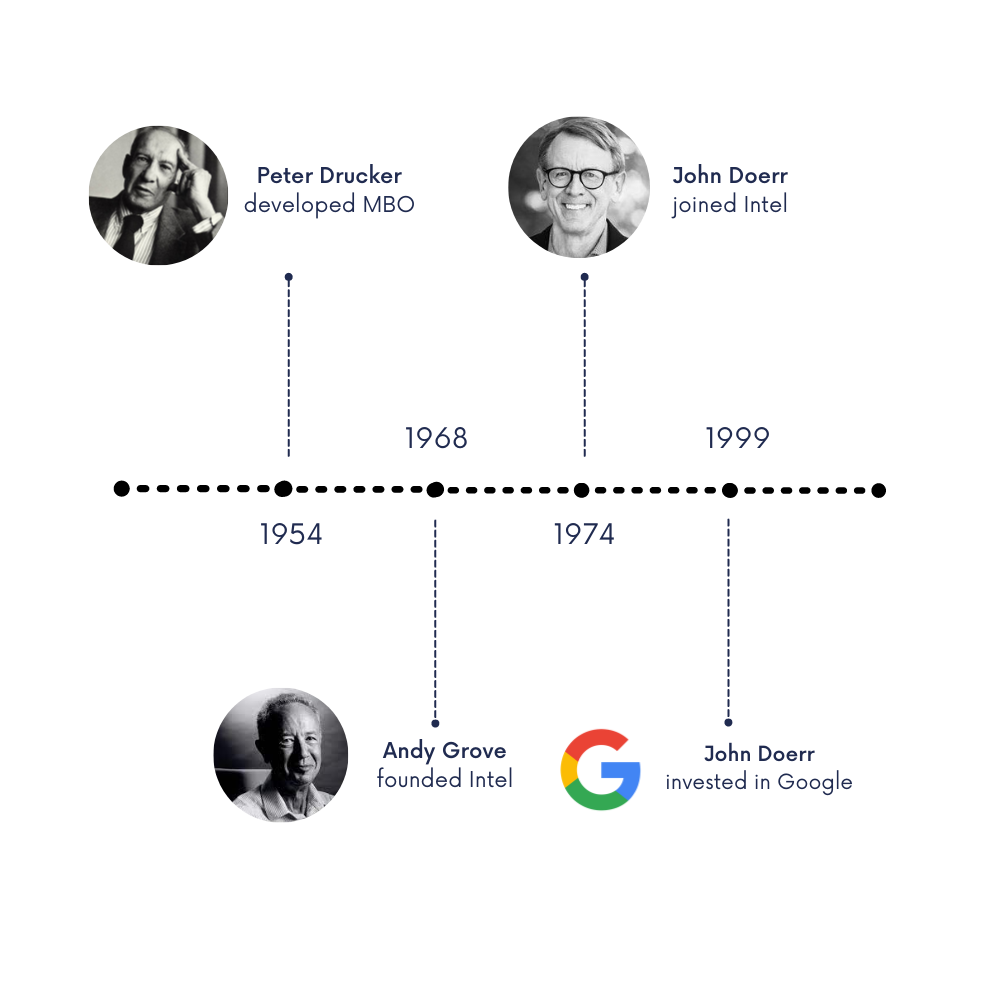OKRs - A Short and Simple Guide on how to Set and Achieve Goals
Published on May 24, 2022
What is an OKR?
Objectives and Key Results (OKR) is a goal-setting framework that allows you to define goals — or set objectives — and then track your progress and outcome using key results. The big difference between OKR and other traditional planning methods is that OKR is frequently set, monitored, and re-evaluated.
The (abridged) history of OKRs
The OKR methodology was first created in 1983 by Andy Grove, formerly Intel CEO, who taught the idea to John Doerr. Yet it was not until early 2000 that this concept was popularized by no other than Doerr, then one of Google’s early investors, as he introduced OKRs to Google’s leadership. They started testing the concept out over the next couple of quarters. Now, Google sets annual and quarterly OKRs and holds company-wide meetings quarterly to share and grade OKRs.
Since becoming popular at Google, OKRs have found favor with several other similar large tech organizations including LinkedIn, Twitter, Uber, and Microsoft.

Unveil the formula of OKRs
Now that we have gotten the basics down, let’s take a closer look at what it takes when setting your goals using OKRs. As the name suggests, there are two components in OKRs:
- Objective is what you’d like to achieve. It sets a clear direction for the team, so don’t go astray.
- Key Results are the measurable outcomes required to achieve Objectives. One Objective should have from 2 to 5 Key Results, more than that and no one would bother remembering (or achieving!) them all. Focus on measuring what matters.

Whereas an Objective can be extended over a period of time, Key Results change as the project progresses. Once all the Key Results have been achieved, the Objective is fulfilled.
OKRs are typically written with the Objective at the top, followed by the supporting Key Results. They can also be written as a statement:
I will (Objective) as measured by (Key Results).
For example, this is one of the OKRs for our marketing team at FABA this quarter:
- O: Push the company’s social performance
- KR1: Climb 2 ranks on Top Web Development Companies in Vietnam on Clutch
- KR2: Reach 2K total engagement on Facebook
Once your OKRs have been set, it’s important to frequently check in on your team's progress and discuss to make sure that everyone is aligned with the mission, and if any blocker coming up can be handled on time. This brings us to the next part, common OKRs mistakes you should learn about.
The Do’s and Don’ts of OKR
Here are some of the most common mistakes in OKR implementations, starting with the most basic ones:

Setting non-measurable Key Results
All Key Results have to be quantitative and measurable. As Marissa Mayer, Google’s former Vice President said: “If it does not have a number, it is not a Key Result.”
Setting the wrong OKRs
Poorly written OKRs can create confusing strategies, causing your team to focus on the wrong targets, for example, those that don’t matter to your long-term business mission. So take a deep breath and think carefully on what milestones you need to tackle first.
Too many OKRs or Key Results
Yes, we all need the ambition to drive us forward. But OKR is not the grocery list that you need to cross everything out. Focus on what matters most for your team and your business at the moment, and crush them. Less is more.
Including tasks as Key Results
A Key Result is not something that you do. It should always be things you measure that you don’t do, but you can influence.
Creating OKRs in secret
Teams have to communicate when setting OKRs, or you can kiss that mission alignment goodbye.
“Set it and Leave it”
Once the OKRs have been set, it’s important for everyone to update on their progress periodically. This way, not only can you have a tighter grasp on your follow-through, but you can also clear out any potential blocker.
OKR is a simple yet effective tool to create alignment and engagement around measurable yet ambitious goals. For more information and etiquette on implementing OKR to your culture, you can check out the next parts of our OKR series, “To Stretch or to SMART, that is the question” and “The Superpowers of OKRs.”









